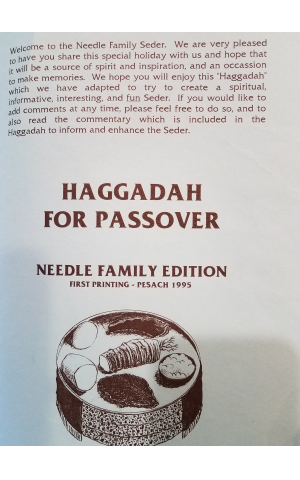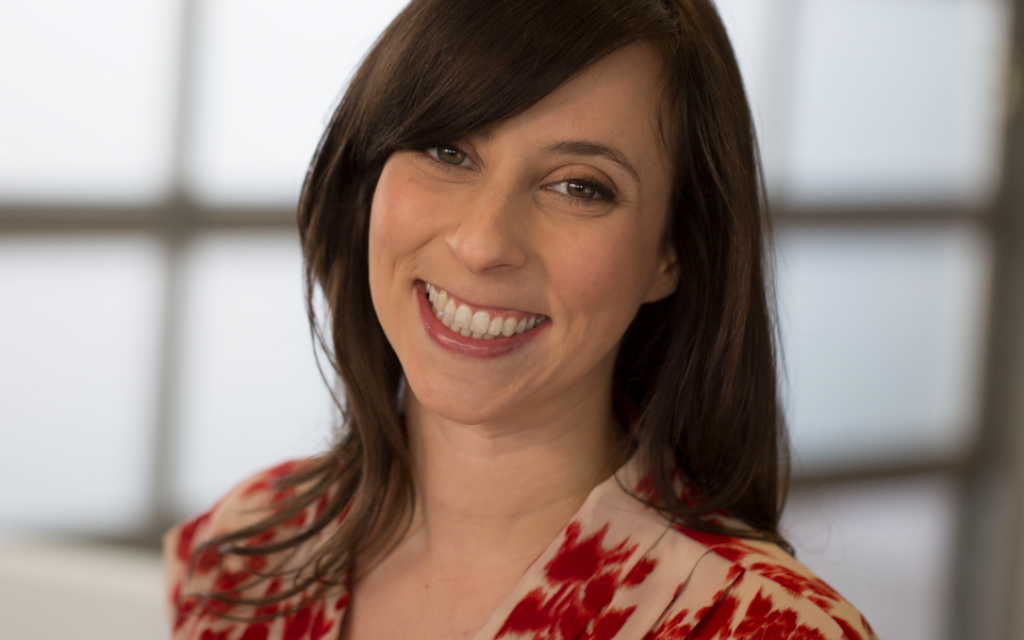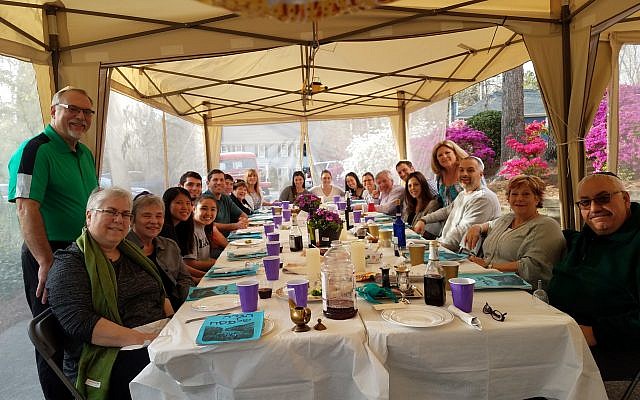Writing Personalized Haggadot is Now the Tradition
In our do-it-yourself culture, it’s not surprising that there’s also DIY Judaism. Nowhere is that more apparent than in personalizing haggadot for Passover.
In our do-it-yourself culture, it’s not surprising that there’s also DIY Judaism. Nowhere is that more apparent than in personalizing haggadot for Passover.
Already for generations, Atlantans have been creating their own haggadot, the telling of the escape of the Israelites from enslavement in Egypt, which is the centerpiece of the Passover seder. “I was raised with my own family haggadah,” says Heather Blake, engagement director at Congregation Etz Chaim. “Some of it was written by hand and some on a typewriter, by my father. Now, as an adult, I’ve written my own. Dad’s were animated and interactive. I include a lot of songs, but I try to keep some of Dad’s traditions.”
Passover is one Jewish holiday that seems to be religiously practiced by Jews, no matter which stream of Judaism they practiced in the past or practice today. The Passover seder is a tradition that includes matzah ball soup, matzot, bitter herbs, gefilte fish, (at least) four glasses of wine, and lots more food. The seder brings together families and friends for a lot of fun and discussion, depending on the predominant age group around the table.
This year, Karen Needle – an Etz Chaim member for 31 years – will have nearly 50 people around her seder table, which will be set up in a tent in her driveway. That is, unless the weather requires the 27 adults and 21 children to shuffle down into her basement for the enactment of the Needle Family Edition Haggadah. For years, Karen and Hank Needle have dropped sheets from the basement ceiling to make it look like tents in the desert, with big blankets and pillows in the center.
When the Needles’ three children were young, they started making the seder more kid-friendly. That required them to “whittle down the ‘thous’ and ‘thees’ from the Maxwell House haggadah” that many American Jews grew up using. Eventually the Needle family pulled from various haggadot to create their own haggadah, full of songs that Karen Needle wrote.

“One year it was Billy Joel songs, so instead of ‘Uptown Girl,’ it was ‘Up the Nile,’ and instead of ‘Still Rock and Roll to Me,’ it was ‘Still Bitter Herbs to Me,’” Needle recalled. A year later, the theme was the Sound of Pesach, with songs written to “My Favorite Things,” among others. “The adults thought it was wonderful, but the kids weren’t familiar with the music.”
The point of creating their own haggadah, she explained, is to “make it fun and not so serious. The topic is serious, and important to tell, but it can be fun, too.” She pointed to a tradition of the family whipping each other with green onions while singing the “Dayeinu.”
“When we are able to hold the seder outside, it is much easier to clean up from,” she added, laughing.
For those who need a little bit of a push to personalize their haggadot, there are now helpful websites that provide guidance, suggestions and organizational skills. This year, just in the city of Atlanta, there were more than 4,500 users of the website Haggadot.com. “That doesn’t include neighboring cities such as Decatur,” according to Eileen Levinson, creative director of the website. She first launched a simpler version in 2011. The current version, launched in 2015, is all based on an idea she had in graduate school.
Today there are more than 100,000 users of Haggadot.com, mostly in the United States, Canada and the United Kingdom. Levinson said her group of freelancers who run the website would like to rewrite it in other languages, especially Hebrew, but that would require additional fundraising.
The website is totally supported today through user donations. “We offer something free and it doesn’t feel right to charge for it since users are downloading their personal photos and content. They have the option of making their haggadot private. In fact, they have to agree to make it public,” she said.
Haggadot.com is popular, Levinson said, because people are taking ownership of their Jewish identity. “There’s more openness to making Judaism our own, and now there’s a lot more comfort with the internet.”

An Atlantan who uses Haggadot.com to create her family’s personalized haggadah is Marsha Shrago, an Etz Chaim member since 1986. “Last year, I started in January and worked at it. It’s not something you can do tonight and have it ready for tomorrow,” she said. “What’s really nice about doing it online is that if you have different guests at your seder, you can change if from year to year. And it’s easy to use.”
Shrago said her intention was to create a haggadah with more questions than answers, such as “What has plagued you this year?” and let people around the table share their experiences.
Personalized haggadot can focus on current social issues, like the environment, immigrants or refugees. That’s what Sherry Frank has often done with her haggadot. She’s a veteran of haggadah-writing, including some only for women. She just wrote a haggadah for the Women’s Seder sponsored by the Atlanta chapter of the National Council of Jewish Women at Congregation Or Hadash. Frank, who was chapter president in 1973 and took the helm again this year, is already planning next year’s Women’s Seder, along with co-hosts.
Whether creating haggadot for organizations of which she’s a member, or writing one for her family, Frank said she changes it “depending on the age of the group around the table.”
When creating a haggadah, Shrago said, “It’s all about getting a hook. We all know the story, but what makes it fun is your telling your version. You have to get everyone to the table.”




comments